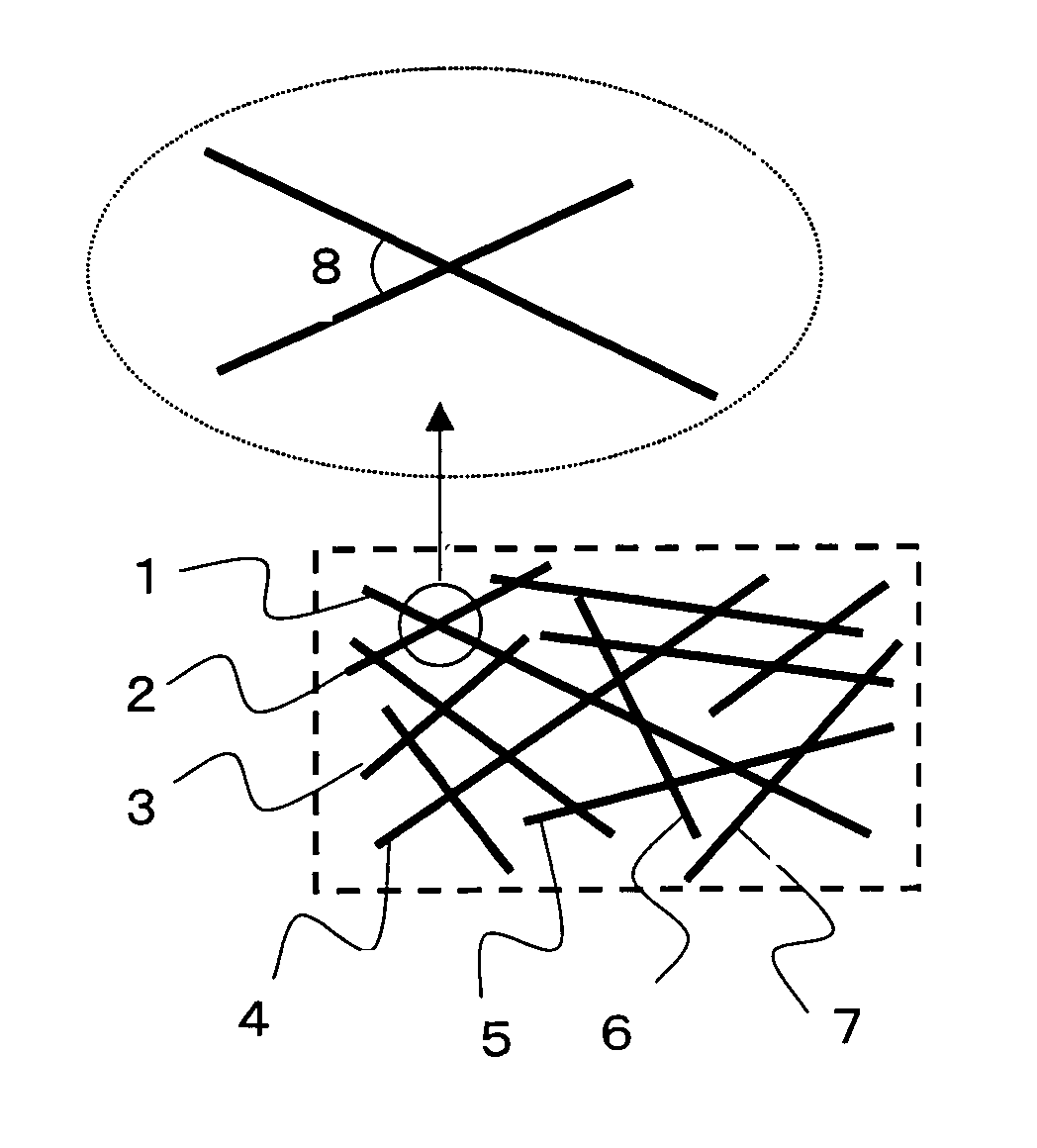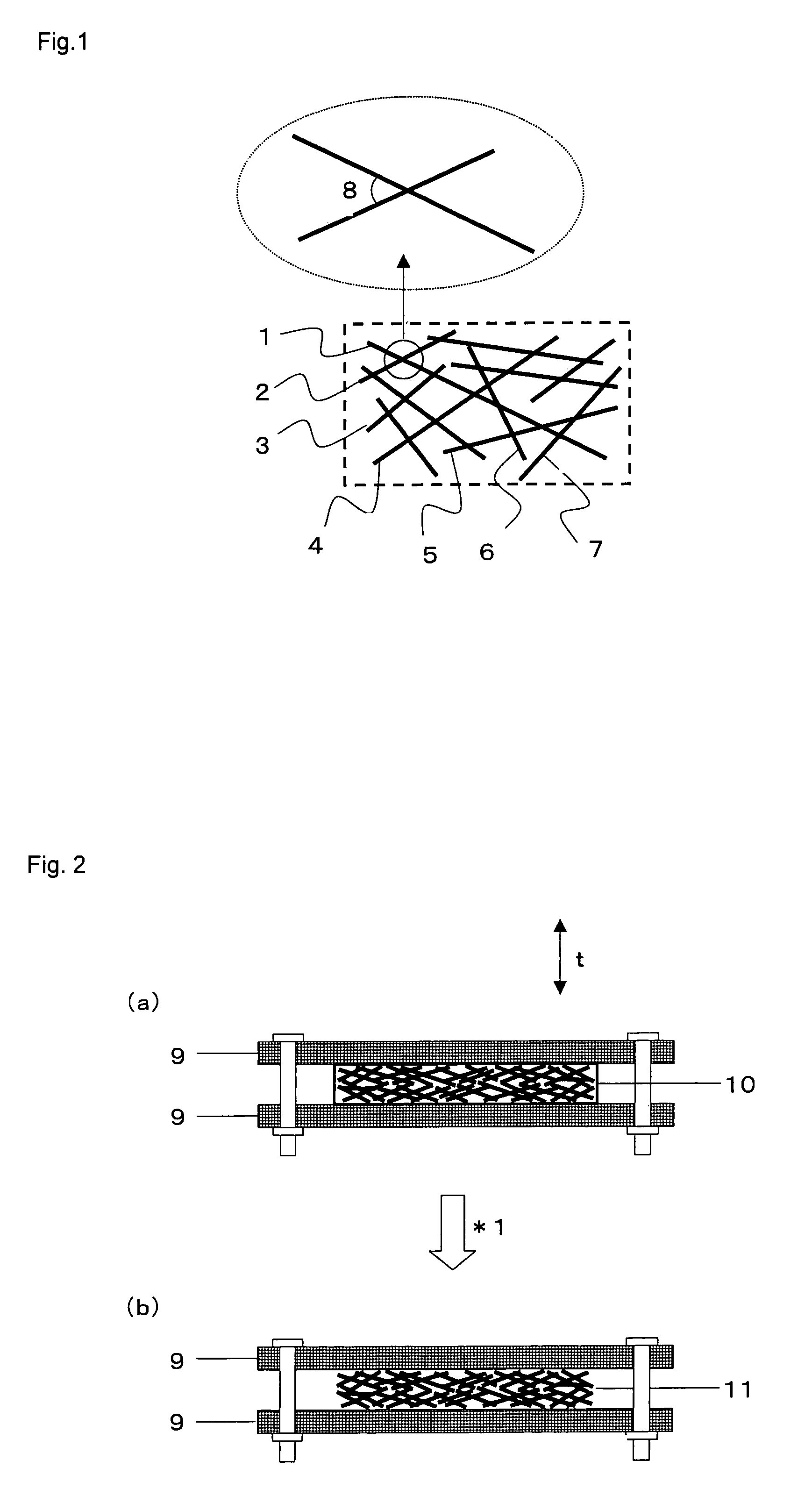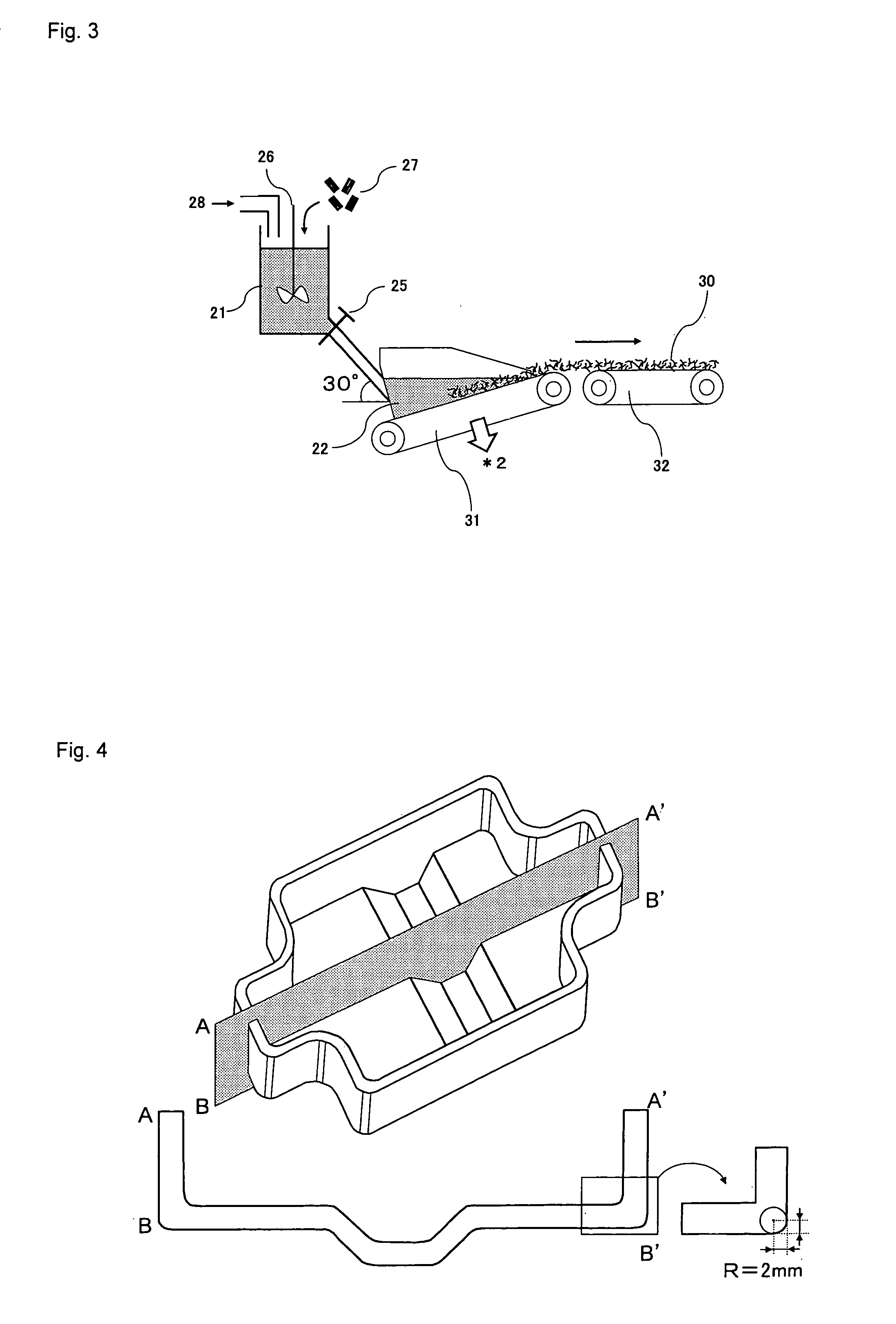Prepreg, preform, molded product, and method for manufacturing prepreg
a technology of molded products and prefabricated products, applied in the directions of transportation and packaging, other domestic articles, synthetic resin layered products, etc., can solve the problems of unsatisfactory shaping into a complicated shape, economic burden has not been eliminated, and usage restrictions, so as to reduce the proportion of reinforcing fibers, enhance the in-plane reinforcing effect, and improve mechanical properties
- Summary
- Abstract
- Description
- Claims
- Application Information
AI Technical Summary
Benefits of technology
Problems solved by technology
Method used
Image
Examples
example 1
[0355]The carbon fiber 1 obtained in Material 1 was cut into 6 mm with a cartridge cutter, so that chopped carbon fiber was obtained. A dispersion liquid with a concentration of 0.1% by mass composed of water and a surfactant (polyoxyethylene lauryl ether (commercial name), produced by Nacalai Tesque, Inc.) was prepared. A carbon fiber base material was produced using the apparatus for manufacturing a reinforcing fiber base material (papermaking base material) of FIG. 3 and using this dispersion liquid and the aforementioned chopped carbon fiber. The manufacture apparatus is composed of a dispersion vessel 21, a papermaking vessel 22, and a conveyor 32. The dispersion vessel 21 is a container in a cylindrical form of 1000 mm in diameter and has a straight transport portion (the inclination angle is 30°) with an opening cock at a lower portion of the container. The transport portion connects the dispersion vessel and the papermaking vessel. A stirrer is mounted to the upper opening o...
example 2
[0358]A prepreg (2) was produced in the same manner as in Example 1 except that the Nylon 6 resin with which the carbon fiber base material was to be impregnated was adjusted so that the fiber mass content might become 52%. The properties of the prepreg are shown in Table 2. An L-shaped box-like molded product was produced in the same manner as in Example 1 except for manufacturing a preform in which seventeen prepregs (2) had been laminated. The preform was shaped well in conformity with the shape of the mold and a molded product that was high in shape quality was obtained. The properties of the molded product are shown in Table 3.
example 3
[0359]A carbon fiber base material was produced in the same manner as in Example 1 except for adjusting the basis weight of the carbon fiber base material to 70 g / m2 by adjusting the flow rate of the dispersion liquid and the speed of the mesh conveyer during papermaking. The properties of the reinforcing fiber base material are shown in Table 1. The Nylon 6 resin film with which this carbon fiber base material was to be impregnated was adjusted so that the fiber mass content might become 65% and a pressure of 5 MPa was applied at a temperature of 270° C. for three minutes, so that a prepreg (3) in which the carbon fiber base material had been impregnated with the Nylon 6 resin was produced. Since the fiber mass content was high, the impregnation with the resin became a little difficult. The properties of the prepreg are shown in Table 2. An L-shaped box-like molded product was produced in the same manner as in Example 1 except for manufacturing a preform in which seventeen prepregs...
PUM
| Property | Measurement | Unit |
|---|---|---|
| tensile strength | aaaaa | aaaaa |
| thickness h0 | aaaaa | aaaaa |
| length | aaaaa | aaaaa |
Abstract
Description
Claims
Application Information
 Login to View More
Login to View More - R&D
- Intellectual Property
- Life Sciences
- Materials
- Tech Scout
- Unparalleled Data Quality
- Higher Quality Content
- 60% Fewer Hallucinations
Browse by: Latest US Patents, China's latest patents, Technical Efficacy Thesaurus, Application Domain, Technology Topic, Popular Technical Reports.
© 2025 PatSnap. All rights reserved.Legal|Privacy policy|Modern Slavery Act Transparency Statement|Sitemap|About US| Contact US: help@patsnap.com



